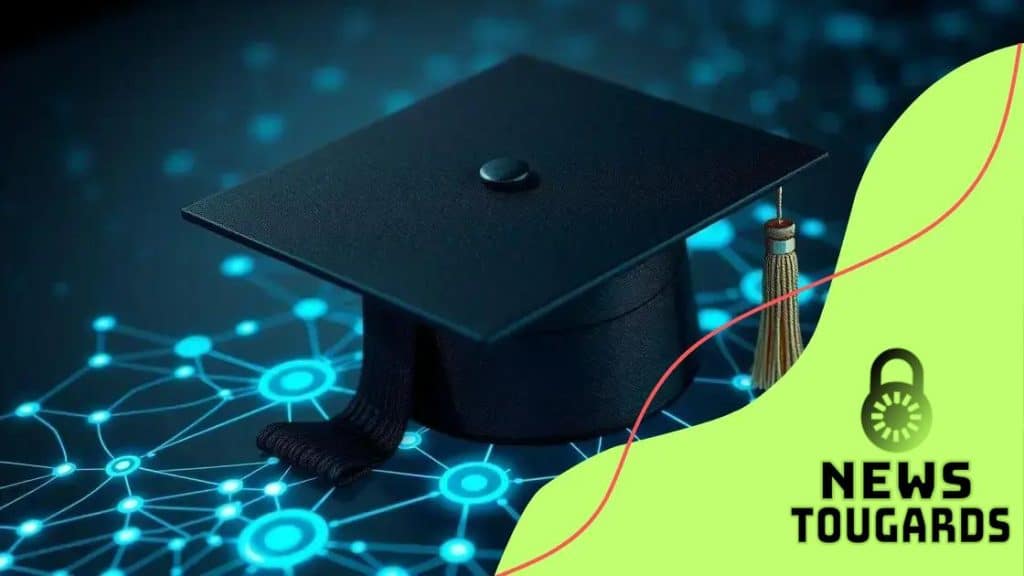How blockchain is improving student credential verification

Blockchain enhances student credential verification by providing a secure, tamper-proof method for issuing and validating degrees, significantly improving trust and efficiency in educational records.
How blockchain is improving student credential verification is a topic that could reshape education. Imagine a world where diplomas and certificates are instantly verifiable and tamper-proof. Intrigued? Let’s dive into how this technology transforms accreditation.
Understanding blockchain technology
Understanding blockchain technology is essential in today’s digital age. It offers a secure way to store and share information. This technology is revolutionizing various industries, including education, and paving the way for innovations in credential verification.
What is Blockchain?
Blockchain is a decentralized digital ledger that records transactions across many computers securely. This makes it nearly impossible to alter or hack the data without altering all subsequent blocks, enhancing security.
Key Features of Blockchain
- Decentralization: Data is not stored in one single location, which reduces the risk of data loss.
- Transparency: All transactions are visible to those with access, promoting trust.
- Immutability: Once recorded, data cannot be changed, ensuring integrity.
- Security: Cryptographic techniques protect data, making unauthorized access difficult.
Blockchain operates through a network of nodes that validate transactions through consensus mechanisms. This process allows all participants to trust the data without relying solely on a central authority. Due to its characteristics, blockchain technology is being adopted in educational institutions to streamline credential verification.
For example, a university can issue diplomas recorded on the blockchain. Employers can verify these credentials quickly and securely, reducing time and costs associated with traditional verification methods. As more institutions adopt this system, student credential verification becomes faster and more reliable.
The impact of blockchain extends beyond education. Industries including finance and healthcare are also exploring its potential, demonstrating the technology’s versatility. As individuals and organizations begin to understand blockchain technology, we can expect its adoption to grow significantly.
The challenges of traditional credential verification
The challenges of traditional credential verification are becoming more apparent as the demand for quick and accurate checks increases. Relying on outdated methods can lead to mistakes, delays, and missed opportunities for students and employers alike.
Issues with Traditional Processes
One major issue is the time involved in verifying credentials. The manual checking processes can take days or even weeks, creating frustration for job seekers. During this time, candidates may lose job offers or face delays in their career progression.
Common Problems Encountered
- Fraud: The prevalence of fake diplomas and certificates makes it difficult for employers to trust what they see.
- Administrative Errors: Human mistakes can occur, causing genuine credentials to be mistakenly questioned or deemed invalid.
- Inconsistent Standards: Different educational institutions often have varied requirements and formats for their credentials, complicating the verification process.
- Limited Access: Not all institutions provide easy access to their records, making verification difficult.
Furthermore, traditional methods often lack the integration necessary to keep up with modern expectations. Employers expect immediate access to credential verification, but manual checks create bottlenecks. Many employers simply cannot wait for this slow process to unfold.
As these challenges persist, the need for a more effective solution is clear. Institutions and employers are increasingly recognizing the limitations of their current systems, prompting a search for alternatives that ensure efficiency and security without compromising the integrity of the verification process.
How blockchain ensures data integrity

How blockchain ensures data integrity is a crucial topic, especially in the realms of education and credential verification. The unique features of blockchain technology provide a reliable way to maintain the authenticity of data.
The Role of Cryptography
One important aspect of blockchain is its use of cryptography. Each block in the chain contains not only data but also a unique cryptographic hash of the previous block. This creates a strong link between blocks, ensuring that any attempt to alter one block would change all subsequent blocks, making tampering evident.
Decentralization Benefits
- Distributed Ledger: Unlike traditional systems, blockchain is maintained across multiple nodes. Each participant has access to the same version of the data, reducing the chance of discrepancies.
- Transparency: All transactions are recorded and accessible to all nodes, promoting trust among participants. This transparency is vital for verifying student credentials.
- Consensus Mechanisms: Changes to the blockchain require agreement from a majority of nodes. This means malicious actors cannot easily manipulate the data.
With blockchain, every time a credential is issued or verified, it gets recorded in a way that cannot be erased. This long-term record enhances accountability and security, making the verification process more trustworthy.
Moreover, because the data is immutable, students can be confident that their achievements are protected. Employers also benefit from this reliability; they can trust that the credentials presented to them are genuine. By using blockchain, both educational institutions and employers help foster a secure environment for verifying student credentials.
Real-world examples of blockchain in education
Real-world examples of blockchain in education highlight how this technology is transforming student credential verification. Educational institutions are experimenting with blockchain to streamline processes and enhance security.
Example 1: MIT and Digital Diplomas
The Massachusetts Institute of Technology (MIT) has implemented a blockchain system for issuing diplomas. Graduates receive digital certificates recorded on the blockchain, allowing employers to verify their credentials quickly. This not only saves time but also enhances the trust in the diplomas issued.
Example 2: Sony and Learning Credits
Another innovative use of blockchain is by Sony, which partnered with a blockchain startup to create verifiable learning credits. Students earn credits as they complete courses, which are securely stored on the blockchain. This system assures that achievements are authentic and easily accessible.
Example 3: Open University and Credential Tracking
The Open University is using blockchain to track and verify educational credentials. By implementing blockchain technology, the university can provide a secure and efficient way for employers to verify applicant qualifications, helping to combat credential fraud.
These examples show that the adoption of blockchain technology in education is not just a concept but a reality. Institutions worldwide are recognizing the potential benefits, enabling quick verification, eliminating fraudulent credentials, and fostering a more trustworthy educational environment. As more institutions adopt this technology, we can expect to see a significant shift in how educational credentials are managed and verified.
Future trends in credential verification
Future trends in credential verification indicate a significant shift towards more secure, efficient, and reliable methods. As technology evolves, educational institutions and employers are looking for innovative solutions to validate educational achievements.
Increased Adoption of Blockchain
One key trend is the increased adoption of blockchain technology for credential verification. As more organizations recognize the benefits of this decentralized system, we can expect wider implementation in verifying degrees and certifications.
Integration with Artificial Intelligence
Another emerging trend is the integration of artificial intelligence (AI) into verification processes. AI can enhance the efficiency of credential checks by automating verification tasks. With machine learning algorithms, systems can learn to identify authentic credentials quickly and accurately.
Rise of Mobile Verification
The future will likely see a rise in mobile verification options. With the widespread use of smartphones, individuals may access their credentials through mobile apps. This convenience can streamline the process for both job seekers and employers.
- Instant Access: Candidates could instantly share their verified credentials during job applications.
- Enhanced User Experience: Mobile apps can provide an intuitive interface for accessing and sharing credentials.
- Greater Security: Mobile verification can include biometric features for added protection.
As these trends unfold, we will likely see a shift toward personalized and user-friendly verification methods. Stakeholders in education and hiring processes will benefit from these advancements, emphasizing security and convenience in managing credentials.Student credential verification will become more reliable, reducing fraud and enhancing trust among employers.
FAQ – Frequently Asked Questions about Blockchain in Student Credential Verification
What is blockchain technology and how does it relate to credential verification?
Blockchain technology is a decentralized digital ledger that securely records transactions. It ensures the authenticity of student credentials by making them tamper-proof and easily verifiable.
How does blockchain improve the speed of credential verification?
By using blockchain, institutions can automatically verify credentials in real-time, significantly reducing the time and effort needed compared to traditional methods.
Are there real-world examples of blockchain being used in education?
Yes, many institutions, like MIT and the Open University, have adopted blockchain to issue digital diplomas and track credentials securely.
What are the future trends in credential verification due to blockchain?
Future trends include the increased use of blockchain for instant access to credentials, integration with AI for automated checks, and the rise of mobile verification options.





